

The future's BRIGHT,
the future's ORANGE.
FIRST CAME THE ELISE, SO GOOD WE NAMED
IT PERFORMANCE CAR OF THE YEAR
NOW THERE'S THE DAZZLING ESPRIT GT3.
IT'S BEEN A WHILE SINCE LOTUS'S FUTURE LOOKED THIS BRIGHT.
Performance Car, February 1997

Stones smack like bullets against the wheelarch liners, heightening the drama attached to full-force braking from 120mph. The new Lotus Esprit GT3's brakes are so powerful, its Goodyear Eagles so tenaciously grippy, that it's literally ripping up the road surface and chucking the debris into the arches. The noise scares the hell out of me, but there's a devilish corner approaching and I daren't come off the brakes, or the GT3 and I are going through the hedge.
Normally I wouldn't approach this particular bend at anything like that speed, but the GT3 gives you this amazing confidence to drive as hard and fast as you like. It's the best Esprit yet; while it's not the fastest, it's the most complete and competent of its breed to roll out of the factory gates at Hethel. And at £39,450, it's also the cheapest Esprit on the price list.
Given the turbulent times Lotus has endured over the last three years, it's a miracle the GT3 was produced at all, never mind that it's such a brilliant car to drive. If you job's under threat, it must be hard to put your heart and soul into a project, but the guys at Lotus seemed to move up a gear. First there was the Elise, then the Esprit V8, and now the GT3, developed at a time when wage packets sometimes didn't turn up because the company was, shall we say, a bit strapped for cash.
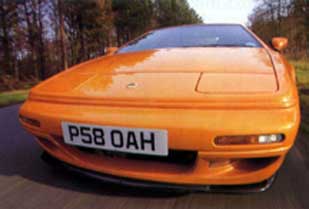
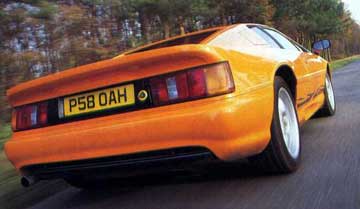
But the turmoil, seemingly, is over now Lotus has been sold to Proton and is about to get the investment it's long been lacking. What makes the achievement of producing recent cars extra-special is that it's been done on a shoestring.
The choice of metallic Tango for the GT3 press demonstrator could be taken as a sign of the new confidence at Lotus, that after the dark days, the future's now bright. Whatever the reason, it's a colour which suits the character of the car perfectly. Previous Esprits (including the V8) have been painted and trimmed to appeal to the management classes, but the GT3 is decked out to attract the sports fan. (There are two alternative colours, green and silver, for the shrinking violets amongst you.)
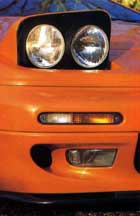
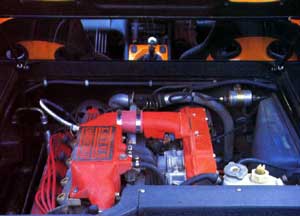
In many ways the GT3 gets back to Lotus's sports car roots. It's a lightweight, stripped of many luxuries, but allowed electric windows and an excellent Alpine sound system. Compared with the outgoing four-cylinder turbo Esprit, the GT3 weights 236lb less. Which in some ways is just as well, as the GT3 has a 2.0-litre turbo pumping out 240bhp, against the old car's 2.2-litre blown lump producing 264bhp.
Lotus wanted to put a gap, in price and performance, between the V8 and the old 2.2. As luck would have it, the company already has a turbo 2.0 for continental markets where there are stiff tax penalties for cars with larger capacity engines; the turbocharger didn't incur any extra penalties. So, pop in this smaller engine, rip out the unnecessary trim, paint outlandishly, and hey presto, the GT3.
Actually, you only have to go a short distance – or just sit inside – to realise there's far more to the GT3 than that. Check out the interior. Open the door and you're dazzled by a blaze of orange from the stylish plastic moulding around the gearlever. Standing proud from that is a bold and simple aluminium alloy gearknob. The carcasses of the competition-style buckets – which have non-adjustable backrests – are also moulded in orange glassfibre, while the rest of the interior is simply done in blacks and greys. Base model this may be, but there's nothing basic about it. In fact, the GT3's cabin is the best the Esprit's interior has ever looked, and it looks as modern as ever, despite the basic design being 20 years' old.
Got to mention those seats again, because they lock you into the GT3, tune you into every move, bump and wiggle of the chassis, force you into a race-style driving position. They're also bloody awkward to get in and out of, but they're an integral part of what makes the GT3 feel so good and so special.
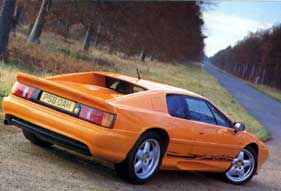
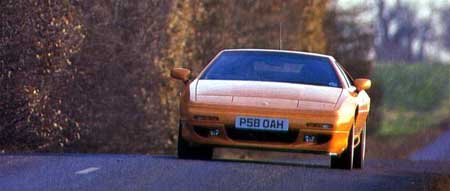
You won't be impressed when you first start the GT3. From cold it idles grumpily, sometimes needing to be revved like a carb-fed performance car from the 'good old days'. Behind your back the engine whines and zings like a Japanese supermini and when you move off, it accelerates like one, too. You've got to stack a lot of revs on the clock before the GT3 shifts with anything like its promised pace, and that can lead to embarrassment at the lights and trouble pulling out of junctions into fast-flowing traffic. It's the old problem of turbo-lag, but once you're aware of it you can lessen the chances of it happening. The gearchange is a good 'un, so using the ratios to keep the revs high is a cinch and a pleasure.
Keep the turbo on the boil – 2500rpm or more – and the throttle response and rate of acceleration will light up your senses and ensure your undivided attention on the road ahead. The GT3 may be slight slower than the 2.2 – 0-60mph in 5.1 secs compared with 4.7 secs – but you'd never guess that from behind the wheel.
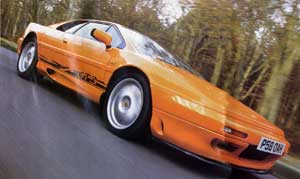
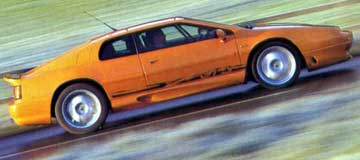
Besides seeing off the turbo lag, the other reason for keeping the revs high is the engine not improves. There's a tough-nut authority to its voice in the upper ranges, a tone laced with echoes of motorsport and premiere division performance.
As impressive as the outright pace of the GT3 is the quality of its chassis. Since when did mid-engine supercars ride this well? It hacks along rough roads at speeds which would leave some rivals agitated and on the brink of breaking free of the earth's gravitational pull. There's nothing soft about it, though, the body staying flat and stable whether you're braking or accelerating, driving in a straight line or hoofing it around corners.
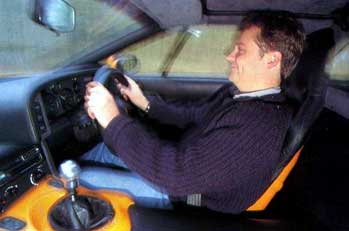
Ah yes, cornering, Corners involve a game called 'How brave are you?'. It's based on entering a bend at a speed you don't feel comfortable with, then watching the GT3 scoot round without any bother. Next time you go faster. And so on until your nerve runs out, which on dry roads will probably be before the roadholding does. By working up steadily to the tyre's breakaway point you'll be ready to flick the tail back into line again when it does eventually make its move.
Other than a go-kart and possibly the Esprit's little sister Elise, I can't think of a car which steers more precisely and quickly than this one does. You turn the steering wheel, the steered wheels comply instantly to your bidding. And each little movement of the front wheels, whether they're being pummelled by a rotten road surface or loading up as they bite into the apex of a bend, is telegraphed straight back up into the palms of your hands. The connection between you, the chassis, and the road isn't quite as one-on-one as in the Elise, but the relationship is nevertheless intense.
With the arrival of the GT3 and its comparatively modest £39,450 price tag, suddenly the Esprit makes sense. The GT3 is designed to be nothing more than a back-to-basics sports car, with driving pleasure at the top of its spec sheet. If you're in the market for mid-engined supercar thrills, why spend more?
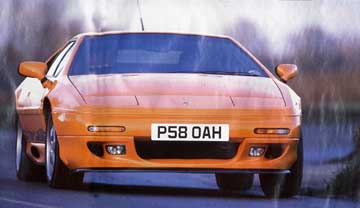
|
|